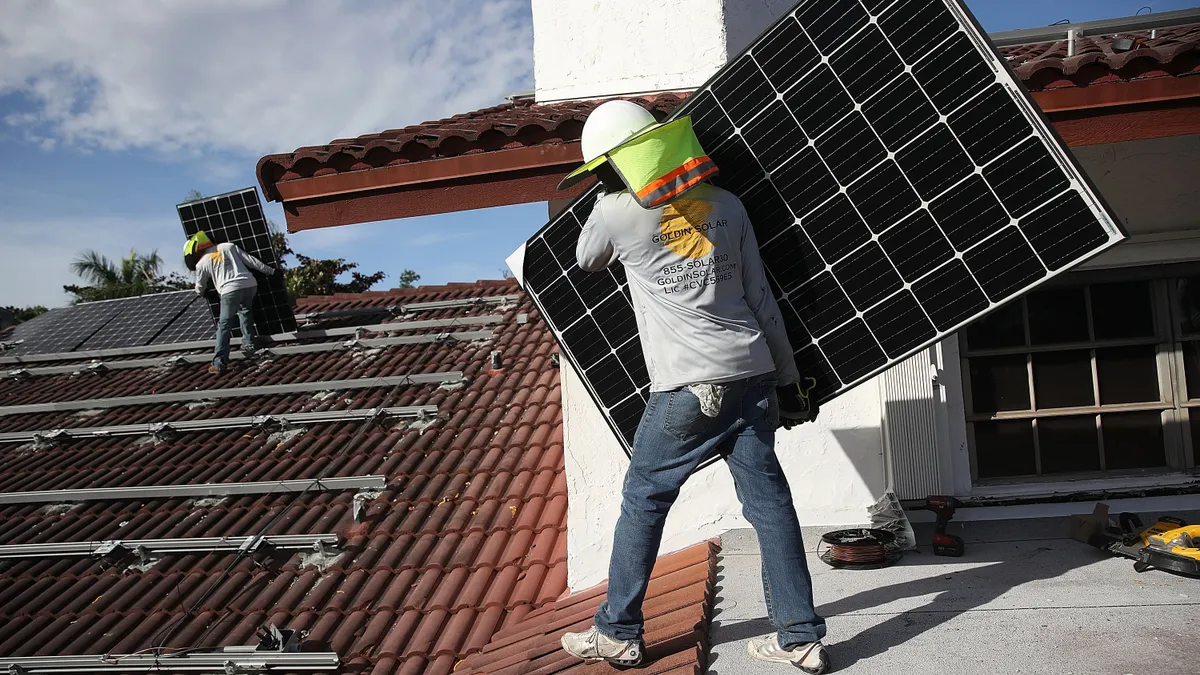Technologies like device-level submetering and bidirectional electric vehicle charging create opportunities to deploy virtual power plants at scale in the near future, panelists said Sept. 16 on a webinar hosted by Advanced Energy United.
Successful VPPs like National Grid’s ConnectedSolutions and the California Energy Commission’s Demand Side Grid Support program demonstrate the benefits of simple, flexible and technology-inclusive program design, panelists from EnergyHub, PowerFlex and Ford Motor said.
But VPP uptake is held back in many markets by a lack of clear state policy directives, regulatory uncertainty, barriers to full wholesale market participation and continued risk aversion among utilities, they added.
Virtual power plants have tremendous potential to shape load and reduce stress on the grid during periods of peak demand, said panelist Carter Wood, who works on electric vehicle infrastructure policy at Ford.
Wood nodded to an April study from Brattle Group that found VPPs could meet 15% of California’s projected peak load in 2035, up from 3% today. That level of deployment — about 7.7 GW — could avoid $755 million in traditional power system costs and reduce consumers’ annual electricity bills by $550 million, the study found.
Bringing VPP capacity onto the grid takes far less time than building a new physical power plant, said panelist Nick Papanastassiou, director of market development and regulatory affairs for EnergyHub, a distributed energy resource management platform.
EnergyHub partnered with Ontario’s Independent Electricity System Operator to enroll more than 100,000 smart thermostat users in less than six months in a VPP that delivered 134 MW of load response in a single hour this summer, Papanastassiou said.
Alongside stationary energy storage, solar arrays and other distributed energy resources, bidirectional-capable electric vehicles represent a massive future source of potential VPP capacity, said Raghav Murali, head of policy and compliance at PowerFlex, a clean energy infrastructure provider for commercial and industrial users. But achieving that potential would require the right policy and regulatory support in place, he added.
“[There is] a whole stack of technology that can be included in this business model, but there are regulatory barriers that need to be worked out,” Murali said.
As examples of policy and regulatory progress, Murali singled out recent Maryland legislation that requires utilities to submit vehicle-to-grid and VPP plans for regulator approval next year, and the California Energy Commission’s modification of DSGS rules that allows EVs to participate.
These efforts to enable more resource types to participate in VPPs are an important first step, but the notion of “NEM integrity” — the need to account for the sources of electrons exported to the grid — remains a barrier to EV participation in many VPPs, Murali said.
Other barriers to wider VPP deployment — and uptake among consumers — include undervaluing of distributed energy resources’ potential grid benefits by utilities and grid operators and a broader information gap about VPPs benefits among utilities, Papanastassiou said.
“There is still a lot of education we can do as an industry,” he said.
More fundamentally, utilities tend to see “steel in the ground” as more profitable than leveraging distributed resources or other existing technologies to avoid current or future costs, Wood said. But “[they] are doing some great things despite … that disconnect,” he added.
Overcoming ongoing barriers for DERs to fully participate in wholesale markets, per the intent of FERC Order 2222, is crucial, Wood said. Minimum sizes for individual DERs participating in a DER aggregation and restrictive single-node aggregation rules are just two of the half dozen obstacles to the order’s full implementation, Guidehouse Insights said in a December 2023 white paper. Around a dozen states continue to prohibit distributed resources’ participation in wholesale markets.
The value of bidirectional-capable EVs is today realized almost entirely at the distribution grid level, but wholesale market bidding would expand the range of grid services available to them, Wood added.
VPP programs themselves should be designed from “a consumer-centric perspective” that drives enrollment and limits attrition, Papanastassiou said. Successful programs tend to give customers compelling incentives to participate, offer a simple enrollment process supported by effective marketing and operate in a way that doesn’t actively inconvenience participants, he said.
Consumer-centric design might not be comfortable for utilities accustomed to the traditional demand response paradigm, but streamlined, technology-inclusive VPPs like ConnectedSolutions show it’s possible, Murali said. VPP operators should avoid onerous terms and conditions that may deter participation, like stiff penalties for failure to meet performance criteria, while following the “8 ½ by 11 principle,” he said.
“If it’s too complicated to fit on a sheet of paper, it’s too complicated for customers to buy into,” he said.
Correction: A previous version of this story incorrectly formatted a company name. It is EnergyHub.





















